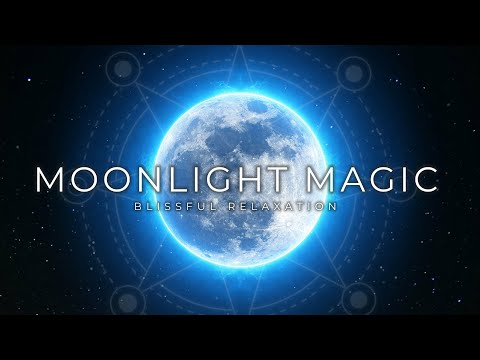Almost 40% of adults experience symptoms of anxiety, but you might find relief through a technique called Progressive Muscle Relaxation (PMR).
Progressive Muscle Relaxation (PMR) was developed by American physician Edmund Jacobson in the early 20th century. Jacobson believed that muscle tension was related to various physical and mental health conditions, and he developed PMR as a way to help individuals achieve deep relaxation by systematically tensing and then releasing different muscle groups. PMR is now widely used as a technique for reducing stress and promoting relaxation.
As you explore PMR, you’ll be following in the footsteps of countless individuals who have found a safe harbor in its practices, embracing a method that’s gentle yet potent in easing tension.
Jacobson’s legacy lives on, as you can find PMR integrated into therapies for anxiety, providing a non-invasive path to tranquility.
Key Takeaways
- Progressive Muscle Relaxation (PMR) was developed by Dr. Edmund Jacobson in the 1920s as a technique for physical relaxation by deliberately tensing and releasing muscles.
- PMR is an evidence-based therapy that helps manage stress and anxiety by contrasting tension and relaxation.
- PMR has both psychological and physiological benefits, including stress reduction, improved mental health, blunting sympathetic arousal, and regulating immunological function.
- PMR is widely used in medical practice for anxiety treatment and chronic pain management, as well as in education and corporate wellness programs to reduce stress and enhance focus and well-being.
Early 20th Century Medicine
In the context of early 20th-century medicine, you’ll find that the origins of progressive muscle relaxation were deeply intertwined with the era’s pioneering practices in addressing anxiety and somatic disorders. Edmund Jacobson’s observations laid the groundwork for Jacobson’s PMR program, which meticulously focused on identifying muscle tension as a physical manifestation of stress. His method involved systematically tensing and then relaxing specific muscle groups, underpinning relaxation therapy with a robust evidence-based approach.
This relaxation technique was revolutionary in its analytical simplicity, yet methodical enough to yield measurable physiological effects. By mitigating the fight-or-flight response, it offered a safe haven for those grappling with anxiety. Jacobson’s work has since become a cornerstone of relaxation therapies, providing a structured method to alleviate the burdens of stress.
Dr. Edmund Jacobson’s Discovery
Although you may not be aware, your understanding of relaxation owes much to Dr. Edmund Jacobson’s discovery that a relaxed body shows no involuntary muscle movement in response to sudden noise.
Jacobson’s analytical approach led to the development of Progressive Muscle Relaxation (PMR), a technique targeting specific muscle groups. His methodical research demonstrated that you can learn to manage tension by tensing and relaxing muscles in a controlled manner.
This not only promotes relaxation but also prepares the body to have a calmer response to stressors. The evidence-based techniques that Jacobson pioneered are now fundamental in managing anxiety and stress-related disorders, ensuring that you can practice relaxation safely and effectively.
Dr. Edmund Jacobson’s work remains instrumental in teaching individuals how to achieve deep relaxation.
The Mind-Body Connection
You’ll discover that every technique of Progressive Muscle Relaxation harnesses the power of the mind-body connection to reduce your stress and enhance your overall health.
| Psychological Benefits | Physiological Benefits |
|---|---|
| Reduces stress | Blunts sympathetic arousal |
| Improves mental health | Regulates immunological function |
| Promotes relaxation response | Creates physiological effects associated with health promotion |
Progressive muscle relaxation training is grounded in an analytical understanding of psychological and physiological impacts. It’s proven effective in not just feelings of relaxation but also in health promotion. By reducing sympathetic arousal to promote a calm state, it helps to regulate your body’s response to stress. This can include regulating immunological function via the relaxation response, akin to meditation. The methodical application of PMR demonstrates the effectiveness of harnessing this connection for both psychological and physiological well-being.
Development of PMR Technique
You’ve seen how Progressive Muscle Relaxation, or PMR, has its roots in the early 20th century, but it didn’t stop evolving with Jacobson.
His detailed program underwent significant refinement, particularly when Joseph Wolpe synthesized it with his desensitization therapy, making it more accessible and time-efficient.
This evolution reflects a broader trend in therapeutic techniques, where methods are continuously honed for greater efficacy and practicality.
Historical Origins
Your understanding of progressive muscle relaxation will deepen as you explore its historical origins, a journey that begins with Edmund Jacobson’s groundbreaking research in the early 20th century.
Consider these pivotal developments:
- Jacobson Developed PMR: He noticed that relaxation counteracted the startle response and crafted a technique involving tension and relaxation of muscles, starting at the head and progressing downwards.
- Wolpe’s Framework Called Abbreviated PMR: Joseph Wolpe refined Jacobson’s method, creating a shorter version that incorporated breathing techniques within systematic desensitization.
- Evidence of Efficacy: Systematic reviews, including those by Lazar et al., show that progressive relaxation reduces anxiety, underlining the technique’s value in anxiety and stress management.
Methodically, Jacobson’s original technique has evolved through structured training sessions, affirmed by evidence-based practices for your safety and well-being.
Technique Refinement Evolution
As you delve into the refinement of progressive muscle relaxation, innovation becomes a cornerstone in its evolution from Jacobson’s initial observations to the nuanced approaches used today. The technique refinement has seen a focus on muscle training, first tensing and then relaxing the muscles, to maximize the contrast between the two states. The evolution of this method encourages you to practice the techniques with greater precision, enhancing the benefits of these approaches.
| Evolution Aspect | Impact on Practice |
|---|---|
| Abbreviated Cycles | Shorter sessions, easier to integrate into daily routines |
| Breathing Techniques | Augments relaxation, promotes a deeper sense of calm |
| Guided Imagery | Emotional engagement, reduces contractions of the eye |
Analysing the evolution of progressive muscle relaxation, it’s evident that each refinement is evidence-based, aimed at ensuring safety and efficacy for users like you.
PMR in Medical Practice
You’ve likely encountered the term PMR in medical circles, particularly in discussions about anxiety treatment and chronic pain management. Research shows that PMR techniques significantly lower symptoms of anxiety and can improve pain thresholds, demonstrating their clinical utility.
It’s therefore not surprising that PMR has become an integral part of many practitioners’ therapeutic arsenal, offering a non-pharmacological approach to patient care.
Anxiety Treatment Efficacy
Incorporating progressive muscle relaxation (PMR) into your medical routine has been proven to significantly alleviate symptoms of anxiety and stress. Here are the key points:
- Anxiety Treatment Efficacy: Studies have found that PMR significantly enhances the management of generalized anxiety disorder by helping decrease sympathetic arousal.
- Effects of Progressive Muscle Relaxation: Using PMR and tailored approaches to relaxation reduces anxiety associated with various stressors, contributing to overall well-being.
- Clinical Integration: PMR isn’t only effective but also safe, supporting its integration into medical practices as a complementary treatment for stress and anxiety.
The evidence-based approach to PMR underscores its role in anxiety treatment efficacy. Methodical application of these techniques can yield substantial benefits in reducing the physical and psychological burden of anxiety disorders.
Chronic Pain Management
Many patients with chronic pain have found that adding PMR to their treatment regimen significantly reduces their discomfort and enhances their daily functioning.
Progressive Muscle Relaxation (PMR), by focusing on tension in individual muscles, helps reduce the anxiety associated with pain. This methodical approach to Muscle Relaxation and Breathing promotes a relaxation response that’s crucial for alleviating chronic pain symptoms.
Evidence suggests that PMR not only addresses pain by demonstrating a direct impact on muscle tension but also improves mood, which can be especially beneficial for pain patients who may rely on opioids.
As safety is a paramount concern, PMR serves as a non-invasive complement to conventional therapies, offering a sense of control and well-being without additional risks.
Expansion Beyond Medicine
Progressive Muscle Relaxation (PMR) techniques have found their way into the routines of various professionals, including educators and corporate wellness coaches, as a stress-reduction tool. These techniques foster a relaxation response that counters the stress response, offering a non-pharmacological method to manage anxiety and enhance well-being.
Consider the following evidence-based applications of PMR:
- Home Use: PMR can be practiced at home, aiding in anxiety and pain relief, improving mood, and enhancing sleep quality.
- Educational Settings: Educators integrate PMR with breathing exercises to help students cope with stress, leading to a more conducive learning environment.
- Corporate Wellness: Companies employ PMR to improve the overall health of their workforce, as empirical evidence supports its efficacy in reducing health problems related to stress.
These practices underscore PMR’s adaptability and its importance in promoting safety and health beyond the medical field.
Who Developed the Technique of Progressive Muscle Relaxation?
Progressive muscle relaxation techniques were developed by American physician Edmund Jacobson in the early 1920s. Jacobson believed that mental relaxation could be achieved through physical relaxation, and he developed this method to help individuals manage stress and anxiety. Today, this technique is widely used in therapeutic and wellness settings.
Legacy and Modern Use
While you may use PMR to alleviate stress in your daily life, its enduring legacy is evident in its widespread modern application across various sectors from healthcare to corporate wellness programs. Progressive muscle relaxation (PMR) aims to systematically reduce stress by teaching you to tense each muscle group before letting it relax. Therapeutic relaxation scripts can be given or made for home use once a patient has mastered the technique. This ensures you can consistently use this knowledge to relax the muscles, whether you’re a busy professional or a student needing to unwind.
| Sector | Application of PMR | Benefit |
|---|---|---|
| Healthcare | Managing anxiety, panic, and phobias | Non-pharmacological intervention |
| Education | Helping deeply relaxed students reduce anxiety | Enhanced focus and decreased stress levels |
| Corporate Wellness | Stress reduction for employees | Improved overall employee well-being |
| Personal Self-Care | Home use for daily stress management | Accessible and sustainable self-help tool |




